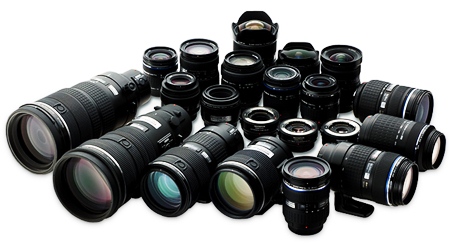There is much mystique about cameras, and some snobbery as well. Just as a Mercedes in the car park outranks the humble Toyota, so does the big SLR outrank the pocket-sized point and shooter. But is it any better? The simple answer is ‘Yes!’ because you can change lenses.
However, to understand just why the SLR is better, it is necessary to understand just what and how any camera produces a final image. Now, no matter what you pay for a camera, the basics are all the same. It is a light-tight box with a piece of glass at the front that can be focussed onto electronic “film”. The rest is fancy stuff to work out exposures, but the simple light through glass is the same for every camera.

One of the questions professional photographers often get asked is, “What lens would you use to shoot a (insert the subject)?” However, the lens a pro selects depends upon many factors, and the subject being shot is only one of them!
In some instances, you can almost get the identical looking shot of the subject with a 28 mm lens, a 50 mm or a 135 mm. By now you are saying, why have all these different lenses if the shots look all the same? The essential word here was “almost” the same. There will be tell-tale differences and it is these differences that make or break your photographs. By using the differences you can manipulate the shot to produce the effects you want.
Right then, let’s get down to some examples. You are on a tropical beach, and you want the blue skies over the sea type of picture. Unfortunately, the sky is only pale blue. What to do? The lens to use to increase the blue colour of the sky is the widest angle lens you have got in the bag. How does this work? Simple, you are taking an enormous area of sky with the wide angle and compressing it into the small 35 mm sized memory card. Compressing all that sky increases the depth of the colour and makes it more blue than it really was!
Another example, you have just bought a car and want to send a photo of it to your relatives at home. You want them to be jealous. You want it to appear as imposing as possible. What to do? Leave the wide angle lens on and get down low and close to the car. Look through the viewfinder and the car suddenly looms large and powerful above you. The closer you get, the more it looms above you. Click! It is in the bag and looks impressive.
This time you want to take a photograph of your house. Unfortunately there is a rubbish dump at the back, and no matter what angle you take it from there are piles of rubbish in the background. This one is even easier to get over. Use a long lens (135 mm and upwards) and take the shot. With the short depth of field available with the longer lenses, the rubbish dump will turn into a nice blurry, soft, out of focus background, and no one will ever know you are living in Soi Garbage.
What about a nice close up of your favourite painting you bought? Another “genuine” Sunflowers by Van Gogh. Will you use a close-up lens, the wide angle setting on the zoom lens? No, you should use the telephoto long lens and stand back. If you go in close with the wide angle you will get distortions at the edges and strange shadows across the canvas because you physically get in the way of the light. With the long lens there is less distortion and the light will fall evenly across the picture.
Mind you, there are times when the subject being shot does dictate the lens you would use. Let me assure you that when photographing rampaging lions I would use the longest lens in the world, or an AK 47. So there you are, think about the effect you want, as well as the subject matter when deciding what lens to choose.




